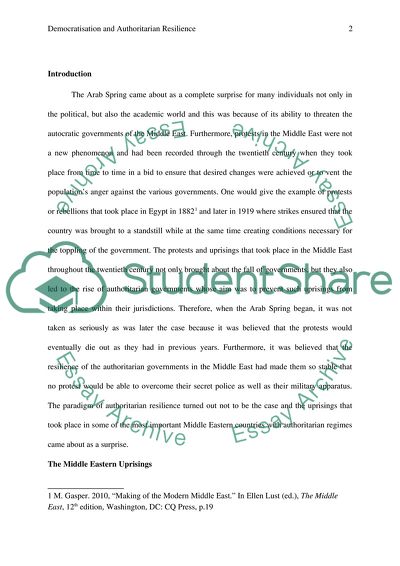Cite this document
(Arab Spring: Inter-Paradigm Debate Case Study Example | Topics and Well Written Essays - 3000 words, n.d.)
Arab Spring: Inter-Paradigm Debate Case Study Example | Topics and Well Written Essays - 3000 words. https://studentshare.org/politics/1876331-how-does-the-inter-paradigm-debate-between-democratization-and-authoritarian-resilience-help-explaining-the-arab-spring
Arab Spring: Inter-Paradigm Debate Case Study Example | Topics and Well Written Essays - 3000 words. https://studentshare.org/politics/1876331-how-does-the-inter-paradigm-debate-between-democratization-and-authoritarian-resilience-help-explaining-the-arab-spring
(Arab Spring: Inter-Paradigm Debate Case Study Example | Topics and Well Written Essays - 3000 Words)
Arab Spring: Inter-Paradigm Debate Case Study Example | Topics and Well Written Essays - 3000 Words. https://studentshare.org/politics/1876331-how-does-the-inter-paradigm-debate-between-democratization-and-authoritarian-resilience-help-explaining-the-arab-spring.
Arab Spring: Inter-Paradigm Debate Case Study Example | Topics and Well Written Essays - 3000 Words. https://studentshare.org/politics/1876331-how-does-the-inter-paradigm-debate-between-democratization-and-authoritarian-resilience-help-explaining-the-arab-spring.
“Arab Spring: Inter-Paradigm Debate Case Study Example | Topics and Well Written Essays - 3000 Words”. https://studentshare.org/politics/1876331-how-does-the-inter-paradigm-debate-between-democratization-and-authoritarian-resilience-help-explaining-the-arab-spring.


